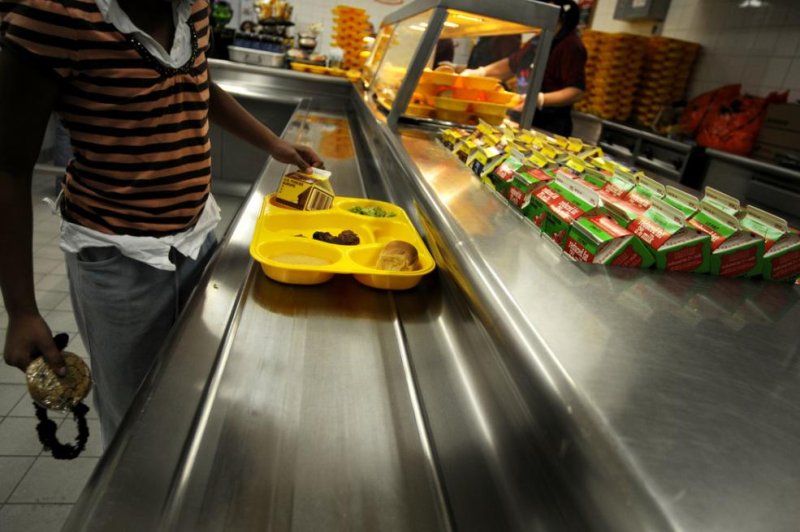Research suggests school cafeterias generate millions of dollars worth of post-service food waste. Photo by Staff Sgt. Sarayuth Pinthong/Ramstein Air Base/U.S. Air Force
Dec. 6 (UPI) -- A new study by the World Wildlife Fund suggests schools in the United States are generating hundreds of thousands of tons of post-service food waste every years.
For the study, researchers analyzed the amount of food wasted in 46 schools located in nine U.S. cities across eight states. They used the results to estimate how much food is wasted by the entirety of the American school system.
The findings -- detailed this week in the report Food Waste Warriors: A Deep Dive Into Food Waste in US Schools -- school cafeterias in the United States produce approximately 530,000 tons of food waste per year.
Researchers totaled the waste at a cost of $9.7 million per day or $1.7 billion per school year.
In addition to measuring the amount of food and milk that gets thrown in the trash at schools participating in WWF's Food Waste Warriors program, researchers also worked to educate students on the environmental impacts of food waste.
"Producing food has a tremendous impact on our planet and biodiversity, but the plate-to-planet connection is not always made," Pete Pearson, senior director food loss and waste at the World Wildlife Fund, said in a news release. "By raising awareness on the issue of waste and engaging champions in our schools, we can inspire the next generation of students to tackle the global food waste challenge."
Program leaders also worked with students to come up with ideas for how to reduce food waste.
During the six-week food waste audit program, simply measuring food waste and making students aware of the problem was enough to reduce food waste by an average of 3 percent between the first and last audit. Elementary schools made even greater progress, reducing food waste by an average of 15 percent.
If more schools implemented similar programs and achieved only a 3 percent reduction in food waste, WWF researchers suggest school systems could save millions of dollars.
Authors of the new report hope to build on the Food Waste Warriors program by developing new ways to track and reduce food waste at schools in the U.S.
"It starts with better data," said Pearson. "Imagine if every school consistently measured waste? Openly sharing this data and investing in food waste prevention in U.S. schools provides a scalable solution to keep food out of landfills, improve nutrition and rekindle my grandparents' zero waste food ethic we desperately need."
The new report comes on the heels of a report by the CDC that suggests students in urban school districts in the United States aren't receiving the same levels of food and nutrition education as their peers in other parts of the country.
Authors of the CDC report suggest problems like obesity could be linked with shortcomings in education relating to diet and nutrition.
Just as targeted diet and nutrition education programs could be used to improve the health outcomes in urban school systems, authors of the WWF report suggest improved food waste education programs could help schools become more environmentally friendly.
Reports suggest global food waste is responsible for 3.3 billion metric tons of carbon dioxide.















